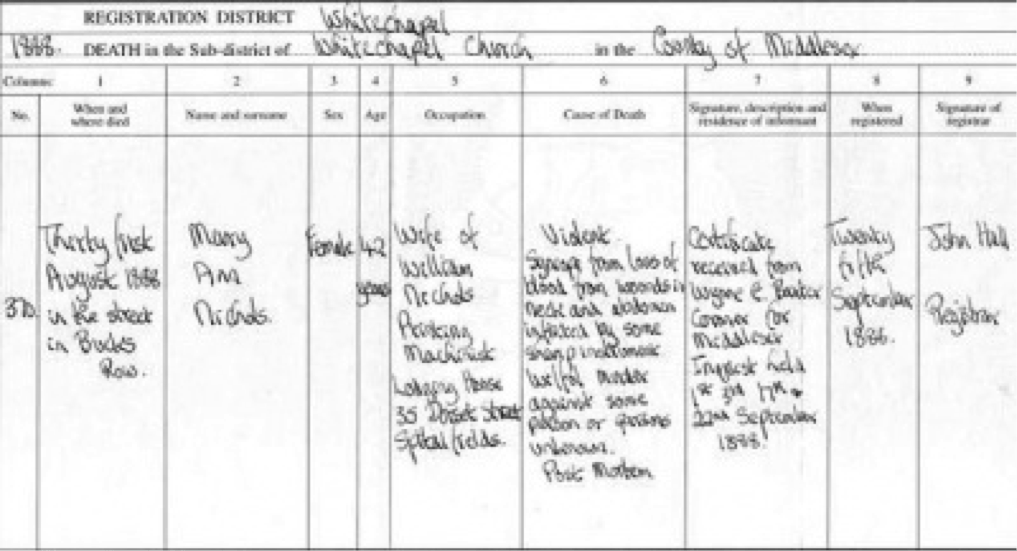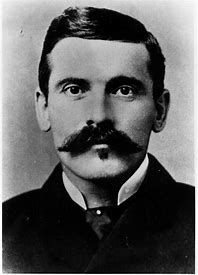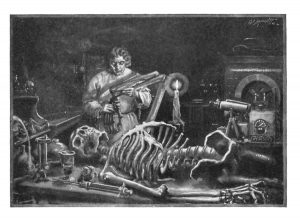Born on August 26, 1845 in London England, Mary Ann Walker was raised by locksmith Edward Walker and his wife Caroline. She married William Nichols, a printer’s machinist, in 1864; however, the couple divorced due to Mary’s drinking habits and prostitution allegations. Mary, now Mary Anne Nichols, continued practicing prostitution and was known for moving between workhouses and boarding houses, and living off charitable donations.

Prostitutes in Europe were regarded with mixed feelings in the nineteenth century. An awareness for the vulnerability of women prostitutes was fairly low and they were treated with curiosity as well as disgust. They had few economic options for making their way in the world and the women themselves were generally born into poverty and had little education or work skills. London prostitutes, especially those who operated on the streets, regularly picked the pockets of the men they preyed on. They kept an eye out for drunkards, from whom they could steal without the risk of being caught. However, this wasn’t the case with Mary as she herself spent most of her waking hours under the influence. Prostitution was very much frowned upon in London, and the women engaging in the profession were seen as the lowest of the low. It wasn’t unusual for men to beat and kill a prostitute after a ‘session,’ so when Mary Ann was found dead with her skirt lifted above her stomach, it was nothing out of the ordinary.1
The night in question was August 30, 1888. A heavy rain was falling on London during one of the coldest and wettest summers on record. Mary Ann was last seen walking down Whitechapel Road, and more than likely she was there soliciting her trade. Prostitution was a very dangerous profession one hundred thirty years ago. With no proper policing and the women themselves looked upon as animals, people would do with them as they pleased. No wonder the infamous ‘Jack the Ripper’s’ victims were all prostitutes.2 They were easy targets, and he was able to get away with murder.
Nichols was often found in the lodging house on 18 Thrawl Street; however, on this specific night she was knocked back due to a lack of money.3 Mary wasn’t fazed by this though, and was on her way back to her ‘office,’ the streets. At 2:30 am she ran into Emily Holland, another worker, who described Mary to be drunk and staggered against a wall. She told Emily that she was off to find another ‘punter’ in an attempt to get her ‘doss’ money in order to rest her head that night.4 One can’t help but think that Mary was selected by Jack because of her drunkenness and through no fault of her own she was destined to a brutal ending because she was such an easy victim. Emily Holland was the last known person to interact with Mary, and only one hour later, at 3:40 am, the latter was found cold and lifeless on the side of Bucks Row, a mere ten minutes walk from where the interaction took place.5

Constable Thain and Sergeant Kerby both passed down Bucks Row at 3:15, but reported nothing out of the ordinary. One must wonder what Nichols was doing from 2:30 to 3:40. She was only ten minutes away from Bucks Row, yet was found dead there seventy minutes later. Another thought would be: what was Jack the Ripper doing during that time. 6
Nichols’ body was initially found by two workmen, who both decided to leave her lying, as they didn’t want to be late for work. However, they let a police officer know her whereabouts on their way. Major bruising was found on Mary’s body and five of her teeth were missing. Investigators put this down to the struggle. Nevertheless, there were several deep cuts along her abdomen, which shows that her attacker enjoyed closeness with his victim, whom he supposedly raped and then mutilated. One can only speculate on why these cuts were made as they were, in no pattern, and didn’t relate to anything. As the first kill, maybe Jack was experimenting with Mary, and she was some sort of sick puppet in which his fantasies could be played out.7

Mary was buried on Thursday, September 6 of that year in the City of London’s Cemetery.8 Two days later, another of Jack’s victims, Annie Chapman, was found in the back garden of a London flat.9 Her womb had been removed and her body left horrifically mutilated. Jack the Ripper had indeed struck a second time. He wasted no time in preparing his second victim, yet this time it was more brutal than the first. One may wonder if Jack had attempted to remove Mary’s womb, but was perhaps disturbed and fled the scene before he could complete the operation.10 Jack the Ripper’s third victim was Elizabeth Stride. She was found at 1:00 am in Dutfield’s Yard, London. The fact that her throat had been cut, but the rest of her body had not been touched, led to speculation that her killer had been interrupted. This links with Mary Ann’s case because it is believed that Jack was also interrupted while working on her. One may believe that Jack liked the excitement of being caught, as he seemed to carry out his kills in the middle of streets. The fourth victim was found in Mitre Square in the City of London at 1:45 am. Catherine Eddowes was savagely mutilated by The Ripper, as her face was torn off and her uterus was missing along with her kidney. Clearly, Jack had not been interrupted this time. On November 9, the body of Mary Kelly was found in her room in Miller’s Court at 10:45 am. She had been virtually skinned to the bone and many experts believed that she was Jack the Ripper’s final victim. This was a fitting finale for the sick monster, as he chose a private area in order to carry out his most disturbing kill of all.11
For well over one hundred years since the time of the murder of Mary Ann and the rest of Jack’s victims, the identity of the killer has been regularly questioned, with nearly one hundred suspects having been named in the process. While many theories exist, none of them have proven to be indisputably convincing. Many think the Ripper was a commoner, possibly a butcher or other tradesman, who lived locally and was employed during the week, explaining why the murders occurred on or near the weekend. A lot of experts also agree that the Ripper was a local to Whitechapel. One of the most compelling suspects was Thomas Hayne Cutbush, who was a violent youth diagnosed insane at the time of the murders in 1888, and was believed to be wandering the streets of London throughout the time of the killings. Subsequently, the murders then stopped after Cutbush was locked up. Disappointingly, this information, along with more evidence, did not prove that Cutbush and Jack the Ripper were the same man; but there was enough evidence to keep Cutbush on the suspect list.12
The finger of suspicion was first pointed at Cutbush in 1894, by The Sun newspaper.13 The article claimed that despite the popular theory of the Ripper being dead, he was in fact a mental patient. The Sun’s detailed description clearly resembled that of Cutbush. The suspicion was that the Metropolitan Police covered up his guilt to avoid the embarrassing outcry that would have followed if the country’s most feared serial killer was found to be Superintendent Henry Cutbush’s nephew. Henry was a high ranked officer, whose reputation could have been seriously damaged if his relative was found to be Jack the Ripper. This is another reason why Thomas Cutbush was actively considered as a suspect.
Some named Cutbush as the No 1 Ripper suspect, but others have strongly denied this theory. Its main weakness is that the last known Ripper victim died in November 1888, at the end of the eleven week killing spree. If Cutbush was the killer, it seems odd that he would commit five murders over such short a period of time, stop for more than two years, and then commit one more assault, in which his victim survived. But there is almost no chance that the case will ever be solved. Thomas Hayne Cutbush remains top of the suspect list.14
It’s an eerie thought that this case will never be solved and even if it is, there is no one to suffer the consequences. It’s even scarier to think that there may currently still be serial killers on the run now that will also never be found and charged for their crimes. There will never be any justice for Jack the Rippers victims, but they can be certain they will never be forgotten.
- Mary Spongberg, The Body of the Female Prostitute in the Nineteenth-Century (New York, NY: New York University Press, 1997), 83-85. ↵
- Encyclopaedia Britannica, July 1998, s.v, “Jack the Ripper, English Murderer,” by John Phillip Jenkins. ↵
- Knocked back means dismissed. ↵
- A punter is a client. Doss is rent. ↵
- Stephen P. Ryder, “Casebook Jack the Ripper,” Victims: Last Addresses, August 14, 2009, 2, www.casebook.org/victims/polly.html. ↵
- Stephen P. Ryder, “Casebook Jack the Ripper.” Victims: Last Addresses, August 14, 2009, 2, www.casebook.org/victims/polly.html. ↵
- Salem Press Encyclopedia, January 2016, s.v. “Jack the Ripper,” by Cait Caffrey. ↵
- Death Certificate: no.370. 25 September, 1888. http://www.casebook.org/victims/polly.html ↵
- A back garden is a backyard. ↵
- William D. Rubenstien, “The Hunt For Jack the Ripper,” Ripper Diaries, (May 2000): 1-3. ↵
- Richard Jones, “Jack The Ripper 1888,” Victims (13 March 2016): 3. ↵
- Andy McSmith, “Madman’s notes throw new light on Ripper case,” The Independent article London, (19 November 2008). ↵
- A tabloid newspaper published in the United Kingdom and Ireland. ↵
- Richard Wheatsone, “Ripping Discovery,” The Sun (16 September 2017). ↵



211 comments
Olga Perez
Jack the Ripper is for sure one of the most ominous and well known murderers that we know of. I think it was interesting to hear about his victims and their life instead of Jack the Ripper directly. I think it’s easy to forget that these women were actual people with lives and feelings, and the author does a nice job of giving us, or me, information that we had not heard of prior to reading the article. I also enjoyed reading about the Cutbush theory and how well the pieces fit together. It’s very strange that once he was “locked up” the killings came to a halt.
Julian Aguero
I found this article to be well written and very informative. I feel victim’s of such “characters” like Jack the Ripper need to be explored more than they usually are, like how this article did. It’s unfortunate how women during this era were put into their position and how those who were to protect and serve most likely overlooked crucial aspects of these cases because who the victim was, a prostitute of the lower class and “the lowest of the low.” With Jack the Ripper executing his victim’s in public, it makes you think whether an individual accidentally witnessed his horrid acts but had more pressing matters like getting to work. Similar to what is referenced above when the two workers left Mary Anne Nichols to lay dead while she wait in stillness for her body to be removed.
Clayton Trevino
This once again serves as a reminder for how important the preservation of mental health is. To think one of the most elusive villains in the history of recorded crime preyed on uneducated and often drunk prostitutes shows that Jack the Ripper’s lack of confidence or his own weird obsession with those he could overpower. His first recorded victim, Mary Nichols, seemed to be especially vulnerable and must have played into his ultimate goal and fantasies. It seems right that he may have been someone in a position of power like a superintendent.
Christopher Martinez
As we grew older I think at one point in time we all heard of the infamous “Jack the Ripper”, but to actually read an article over the story brings light to my ever going curiosity I had. Seemingly Jack the ripper seemed to know the streets and its operating times to be able to get away killing so many women. which also leads to the ability he had to do the inhumane things to his victims such as skinning and removing body parts also makes me think he was a physician who knew what he was doing. The backstory of Mary Ann Walker showed that she was only a experiment to what Jack the Ripper wanted to do and makes me wonder if he was just another somebody how do we know if anyone could do this? after all no one knew who exactly it was and even then maybe they fit in society so well they weren’t even believed to be a suspect at all, its honestly mind blowing.
Johnanthony Hernandez
It’s interesting to think that one of the most infamous serial killers in history could have been either a mental patient and the nephew of Superintendent Henry Cutbush. It makes me wonder if we will ever have an identity to Jack the Ripper or if he will remain the nameless, faceless killer of the London streets. But this is the first time that I have ever heard a possible name to The Ripper that wasn’t a physician. While I am a firm believer that The Ripper was a physician due to his knowledge of the human body in his later victims as well as the detailed mutilation of his last victim.
Destiny Flores
Previously having heard the infamous name of Jack the Ripper, but never his real story, this was certainly an eye opener. I feel its extremely unfair that the guilty will go without consequences and the poor victims, and their families, will never know justice or peace. I also feel that its sickening for the idea that just because officials, and officials’ reputations, were involved the concern for this case depleted rapidly.
Franchizca Scipio-Brown
I enjoyed how some of the first victim’s, Mary Ann Nichols, backstory was explained. This article also gives several examples of the behaviors of different social classes and professionals during this time, some of which, interestingly, actually reflect current behaviors. Although I did have some questions while reading this article. Why name the murderer “Jack the Ripper”? And how did police know it was a man?
Saira Castellanos
Once again, a mentally unstable person was behind the killings. I really wish these mentally unstable people were able to find some sort of help, but they don’t. I really loved this article because of its great detail, it even made me a little sick to my stomach when reading the description of how the Ripper killed his victims. It’s very scary to know that there are more people like Jack still out there today. Thankfully the prostitution situation is not as bad as it was back then. I also found it sick how the evidence showed that he did not finish killing his victims as he wanted to as if it were a fun hobby.
Lauren Castillo
Very well written. It was like telling a horror story. The details of the crimes like the mutilation, victimology, and the background information really brought me into the story. Its sad that society didn’t pay attention because she was a prostitute it makes you realize it hasn’t changed much over the years. Except the technology we have now could probably prevented that second murder.
Alejandra Chavez
I had always heard about a person nick named jack the ripper but my mind had never had anyone to relate that to. I’m glad I read this very well written and thought out informative piece. It was very detailed and I find the author captured the essence of why women are still taught today to be afraid of walking around at night. Thank you.